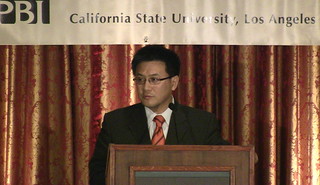 Senator called for nationwide adoption of the failing electoral system
Senator called for nationwide adoption of the failing electoral system
by Brian Leubitz
A few days ago, Sen. Chuck Schumer (D-NY) had something to say about
California, which probably mirrors the diversity of America more than any other state, was racked by polarization until voters approved a constitutional amendment in 2010 that adopted a “top-two” primary system. … While there are no guarantees, it seems likely that a top-two primary system would encourage more participation in primaries and undo tendencies toward default extremism. It would remove the incentive that pushes our politicians to kowtow to the factions of their party that are most driven by fear and anger. For those of us who are in despair over partisanship and polarization in Congress, reform of the primary system is a start. (NYT Op-ed / Sen. Chuck Schumer)
Quickly I’ll say this: Chuck Schumer hasn’t actually looked at how Top-2 has worked here in California. If he had, he would know just how much of a disaster it was. Yes, our polarization decreased after 2010, but you know what else happened in 2010? We elected a Democratic Governor and huge majorities in the Legislature, culminating in supermajorities in both houses. Oh, and we got rid of the 2/3 requirement for our budget.
I was going to write a lot more about this subject, but then friend of Calitics Paul Hogarth wrote an in depth post that is now appearing on the front page of Daily Kos.
But the “top-two” primary also created a whole new host of problems that has led to abysmal voter turnout, Republican-vs-Republican general elections and the rise of corporate Democrats in the state legislature. Oh, and the Tea Party is still a relevant factor in the state.
So no thanks, Chuck. Please don’t export the Golden State’s dysfunction.(Dkos / Paul Hogarth)
Paul goes on to point out a number of good examples of just how badly Top 2 performs in real life. If you are a regular reader, you can probably recall most of them, but his post is a great primer whenever somebody speaks fondly of Top 2. Share it abundantly.

 Stanford Law Professor is first of two picks that Brown will make
Stanford Law Professor is first of two picks that Brown will make




